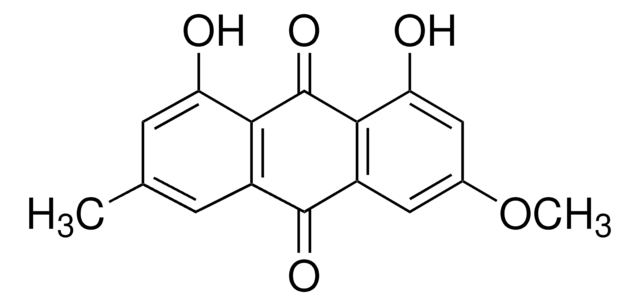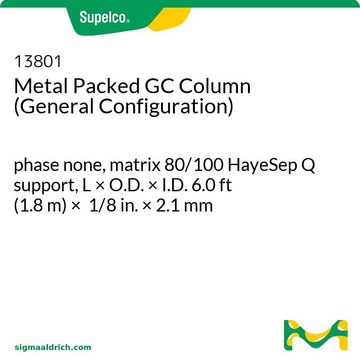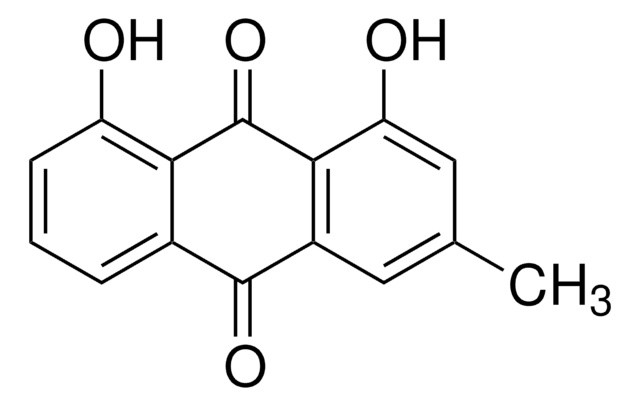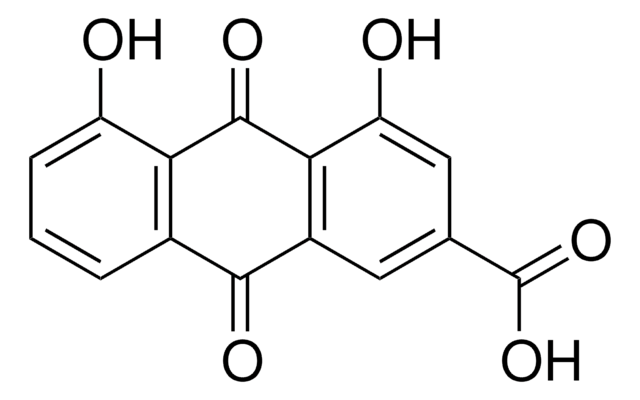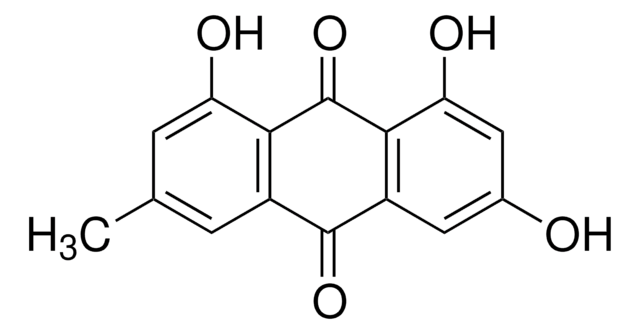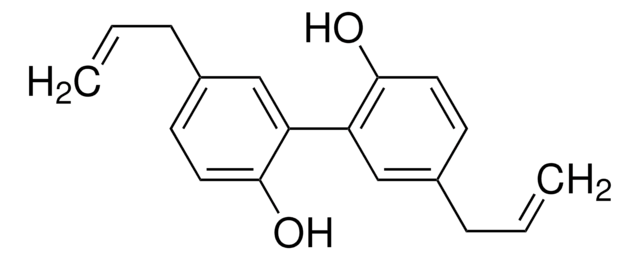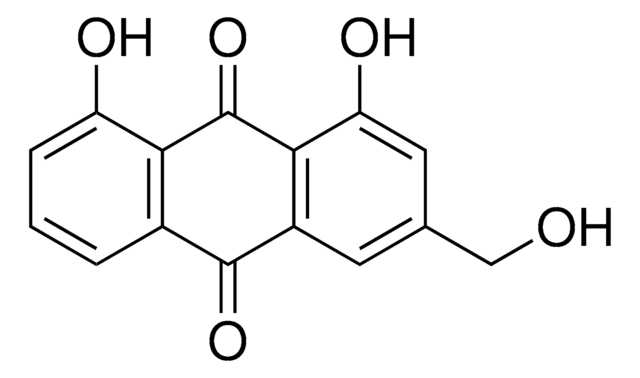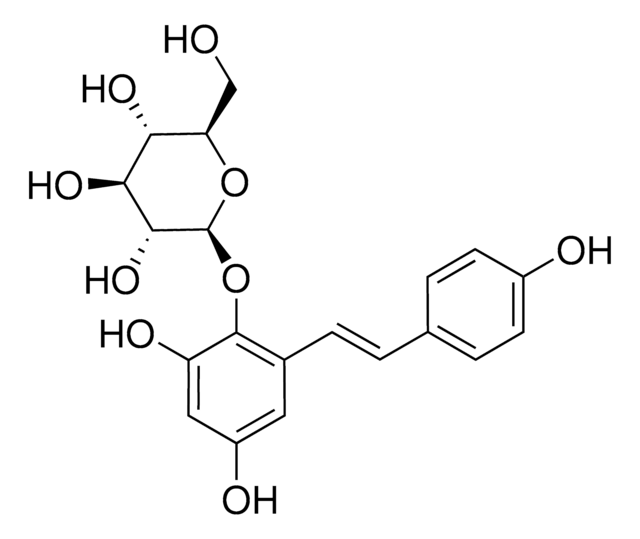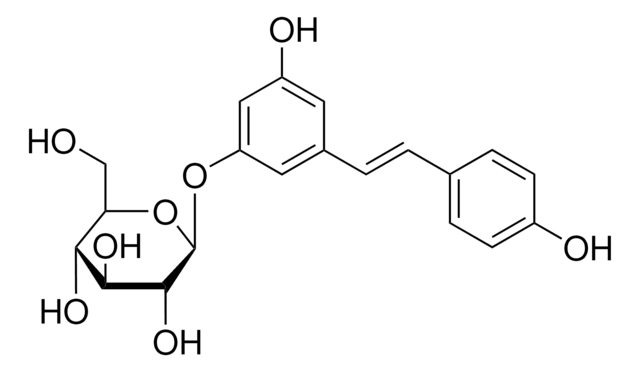17797
Physcion
≥98.0% (TLC)
Sinonimo/i:
1,8-Dihydroxy-3-methoxy-6-methylanthraquinone, 6-O-Methylemodin, 6-Methoxychrysophanic acid, Emodin-3-methyl ether, Parietin, Rheochrysidin
About This Item
Prodotti consigliati
Saggio
≥98.0% (TLC)
Spettro attività antibiotica
fungi
Stringa SMILE
COc1cc(O)c2C(=O)c3c(O)cc(C)cc3C(=O)c2c1
InChI
1S/C16H12O5/c1-7-3-9-13(11(17)4-7)16(20)14-10(15(9)19)5-8(21-2)6-12(14)18/h3-6,17-18H,1-2H3
FFWOKTFYGVYKIR-UHFFFAOYSA-N
Informazioni sul gene
human ... ELA2(1991)
Cerchi prodotti simili? Visita Guida al confronto tra prodotti
Categorie correlate
Applicazioni
Azioni biochim/fisiol
Confezionamento
Avvertenze
Warning
Indicazioni di pericolo
Consigli di prudenza
Classi di pericolo
Acute Tox. 4 Oral
Codice della classe di stoccaggio
11 - Combustible Solids
Classe di pericolosità dell'acqua (WGK)
WGK 3
Punto d’infiammabilità (°F)
Not applicable
Punto d’infiammabilità (°C)
Not applicable
Dispositivi di protezione individuale
dust mask type N95 (US), Eyeshields, Gloves
Certificati d'analisi (COA)
Cerca il Certificati d'analisi (COA) digitando il numero di lotto/batch corrispondente. I numeri di lotto o di batch sono stampati sull'etichetta dei prodotti dopo la parola ‘Lotto’ o ‘Batch’.
Possiedi già questo prodotto?
I documenti relativi ai prodotti acquistati recentemente sono disponibili nell’Archivio dei documenti.
I clienti hanno visto anche
Il team dei nostri ricercatori vanta grande esperienza in tutte le aree della ricerca quali Life Science, scienza dei materiali, sintesi chimica, cromatografia, discipline analitiche, ecc..
Contatta l'Assistenza Tecnica.